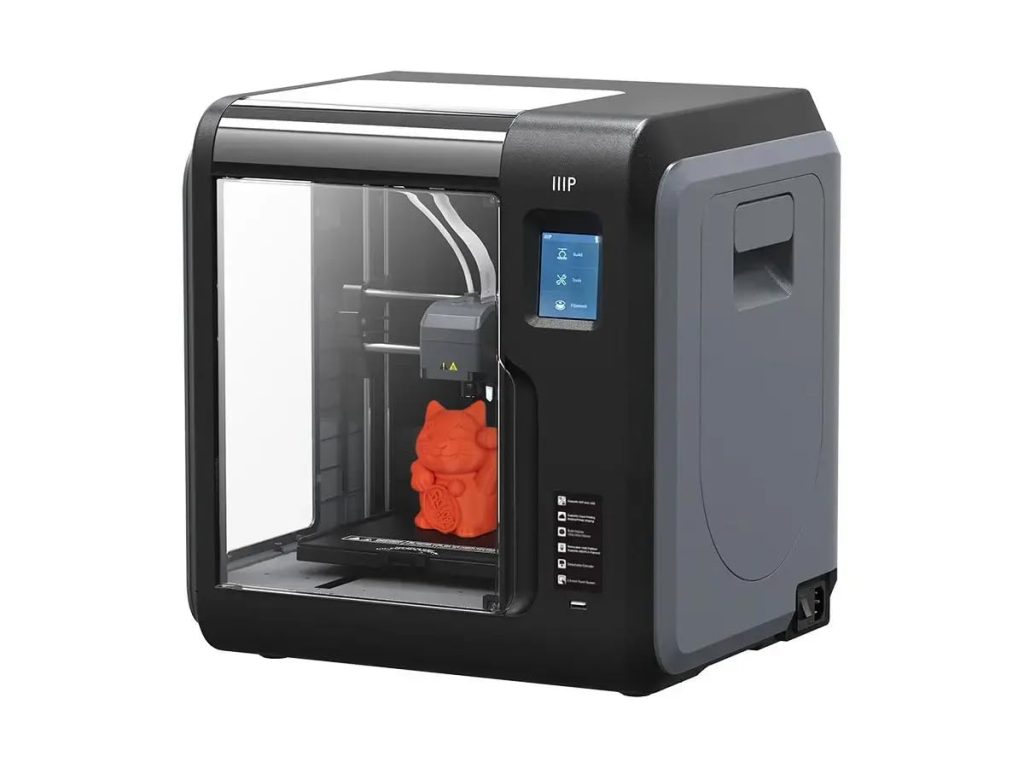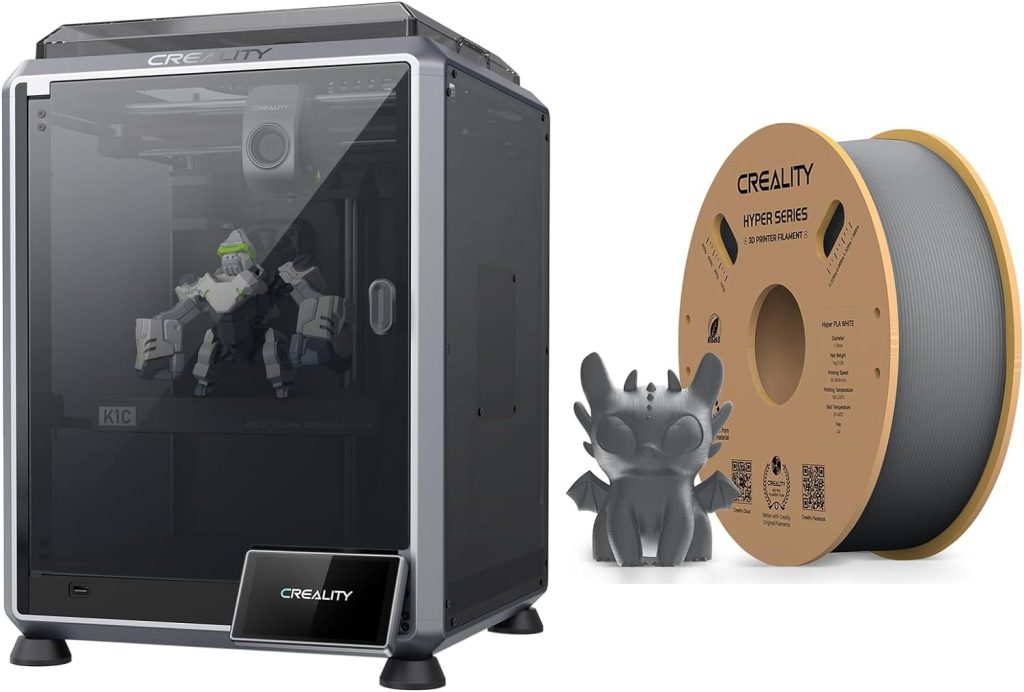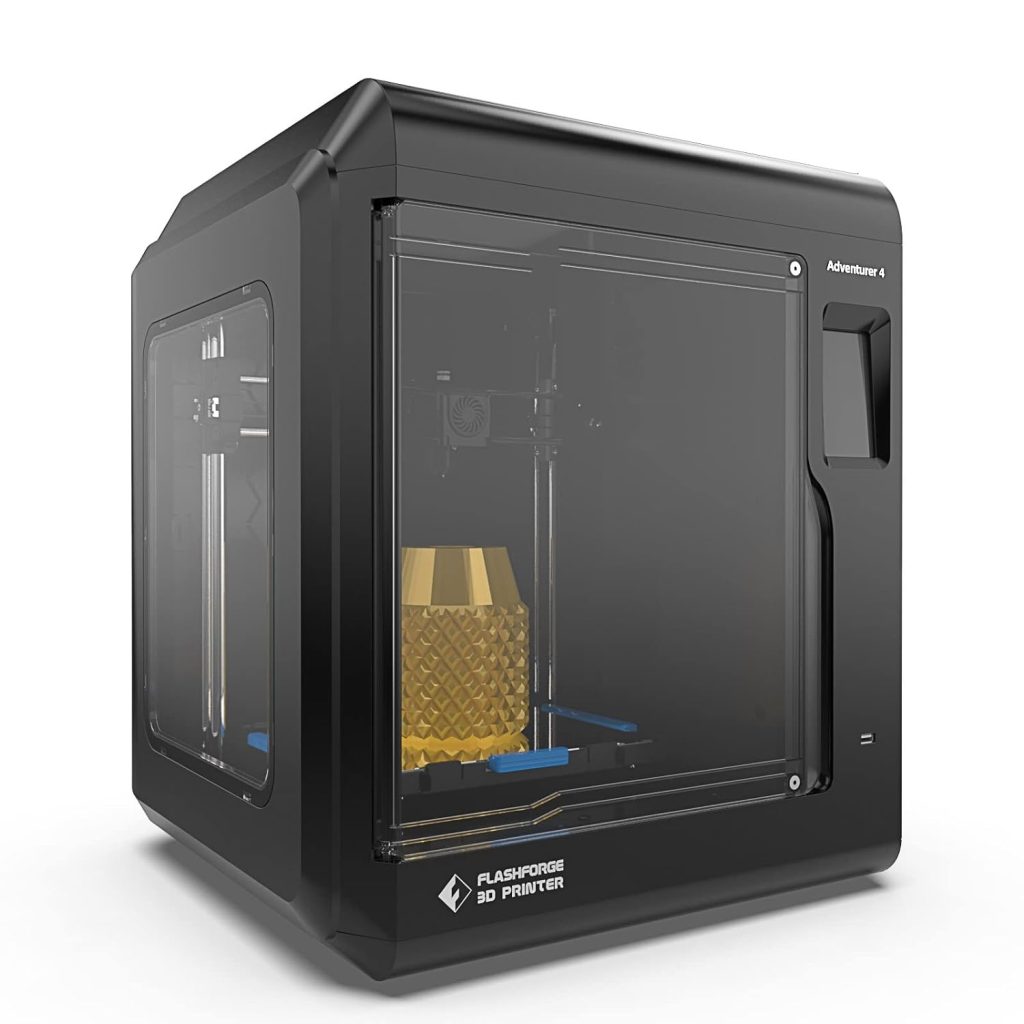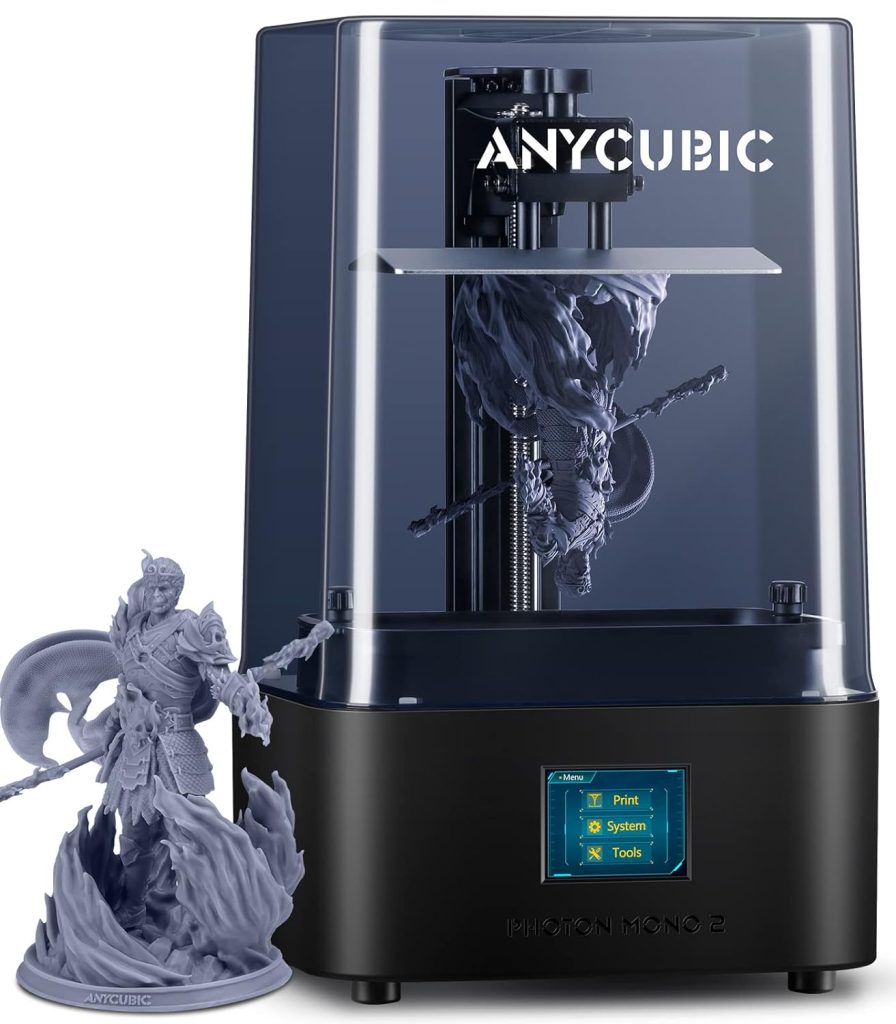3D printers have exploded in popularity in recent years, allowing you to create real-world objects from digital designs. But with so many models on the market, choosing the right one can be overwhelming. This guide will break down the best 3D printers in 2024, categorized by features and budget to help you find the perfect fit for your needs.
| Our Top 5 Picks | BUYING LINK |
|---|---|
| 1. Monoprice Voxel 3D Printer | Check Today’s Price on Amazon |
| 2. Anycubic Kobra 2 3D Printer | Check Today’s Price on Amazon |
| 3. Creality K1C 3D Printer | Check Today’s Price on Amazon |
| 4. FlashForge Adventurer 4 3D Printer | Check Today’s Price on Amazon |
| 5. ANYCUBIC Photon Mono 2 | Check Today’s Price on Amazon |
1. Monoprice Voxel 3D Printer

The Monoprice Voxel is a fully enclosed 3D printer designed for ease of use, making it a great choice for beginners.
Key Features:
- Quick-change nozzle for effortless replacement without tools.
- Heated, flexible, and removable build plate for easy model removal.
- Auto-leveling for hassle-free setup.
- Wi-Fi connectivity and touchscreen interface for convenient operation.
- Auto-feeding with filament sensor for smooth printing.
Pros:
- Easy to use and maintain
- Perfect for beginners
- Safe enclosed design
- Affordable
Cons:
- Smaller build volume (150 x 150 x 150 mm) may limit project size
2. Anycubic Kobra 2 3D Printer

The Anycubic Kobra 2 is a 3D printer designed for speed and efficiency, making it ideal for users who want fast turnaround times on their prints.
Key Features:
- Ultra-fast printing: Up to 6x faster printing speeds compared to previous models.
- LeviQ 2.0 auto-leveling: Ensures a level print bed for optimal results.
- Dual-gear extruder: Provides consistent and precise filament flow for clean prints.
- Powerful cooling system: Enables rapid cooling for high-speed printing.
- Stable Z-axis: Minimizes wobble and improves print quality even at high speeds.
- Easy assembly: Can be set up in just 10 minutes.
- User-friendly touchscreen interface: Simplifies operation and monitoring.
Pros:
- Extremely fast printing speeds
- Excellent print quality at high speeds
- Easy to set up and use
- Reliable leveling system
Cons:
- Potential for increased noise due to high printing speeds
- May not be ideal for beginners due to focus on speed
3. Creality K1C 3D Printer

The Creality K1C is a 3D printer designed for speed and advanced materials, making it ideal for experienced users and professionals.
Key Features:
- Blazing-fast printing speeds: Up to 600mm/s for significantly faster print times.
- AI camera: Monitors the printing process, detects errors, and enables time-lapse videos.
- Carbon fiber filament compatible: Prints with high-strength and dimensionally stable materials.
- All-metal hot end: Handles advanced materials like carbon fiber for wider application.
- Advanced cooling system: Regulates temperature for consistent and high-quality prints.
- Enhanced stability: Reduces vibrations and ensures smooth printing processes.
Pros:
- Extremely fast printing speeds
- Prints with advanced materials for stronger and more durable objects
- AI camera offers monitoring and recording capabilities
- Stable operation with reduced noise
Cons:
- May be overkill for beginners due to advanced features and potentially higher cost
- High speeds might require adjustments for optimal print quality
4. FlashForge Adventurer 4 3D Printer

The FlashForge Adventurer 4 is a 3D printer designed for reliability and versatility, making it a great choice for both professional and hobbyist users.
Key Features:
- Large build volume (220 x 200 x 250 mm) for printing bigger projects.
- Heated build plate with auto-leveling for consistent printing results.
- Quick-release nozzle with multiple size options (0.3mm, 0.4mm, 0.6mm) for flexibility in print detail and speed.
- Wide range of compatible filament materials (PLA, PETG, ABS, PC, etc.) for diverse printing needs.
- Fully enclosed print chamber with HEPA 13 air filter for safety and odor control.
- Remote management capabilities for efficient printing workflows.
Pros:
- Reliable printing performance
- Large build volume for bigger prints
- Versatile with multiple nozzle options and filament compatibility
- Enclosed chamber with air filtration for safety and user comfort
- Potential for remote management
Cons:
- May be pricier than some beginner models
- Software functionality might require some tweaking based on reviews
5. ANYCUBIC Photon Mono 2, Resin 3D Printer

The Anycubic Photon Mono 2 is a resin 3D printer designed for exceptional detail and quality, making it ideal for printing miniatures and other small, intricate objects.
Key Features:
- High-resolution 4K+ LCD screen: Delivers sharp details and crisp lines for miniatures.
- Upgraded LighTurbo Matrix: Provides uniform light distribution for smooth surfaces and reduced layer lines.
- Larger build volume: Offers more printing space compared to similar sized models.
- Improved adhesion: Laser-engraved platform and increased flatness enhance printing success rates.
- New slicer software: Photon Workshop 3.0 simplifies slicing with a more user-friendly interface.
Pros:
- Excellent print quality for detailed models
- Larger build volume for its size category
- Improved adhesion for reliable printing
- Easier to use slicing software
Cons:
- Resin printing requires a well-ventilated space due to fumes
- Requires post-processing steps like cleaning and curing printed objects
- May be more expensive than filament printers
Final Verdict
Unfortunately, I can’t provide a single “final verdict” as the best 3D printer depends on your specific needs and priorities. Here’s a breakdown to help you choose:
For beginners:
- Monoprice Voxel: Easy to use, affordable, and safe enclosed design. (Consider the smaller build volume)
- Creality Ender 3 V2 Neo (not mentioned above, but a popular option): Well-established beginner model with a large community for support.
For speed and efficiency:
- Anycubic Kobra 2: Blazing-fast printing with excellent quality at high speeds. (Potential for increased noise)
For advanced users and professionals:
- Creality K1C: Extremely fast with AI monitoring and advanced material compatibility. (May be pricier and require more expertise)
- FlashForge Adventurer 4: Reliable, versatile with a large build volume and remote management options. (Consider potentially higher cost)
For high-precision, small prints:
- Anycubic Photon Mono 2 (resin printer): Ideal for miniatures with exceptional detail. (Requires a ventilated space and post-processing)
Additional factors to consider:
- Budget: Prices can vary significantly between models.
- Build volume: The size of objects you want to print.
- Filament compatibility: The types of materials the printer can handle.
- Ease of use: How user-friendly the printer is for your skill level.
- Maintenance: How much ongoing maintenance the printer requires.
I recommend researching these models further based on your priorities and reading reviews to get a better sense of their strengths and weaknesses. There are also many helpful online resources and communities dedicated to 3D printing that can offer valuable advice.